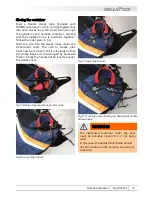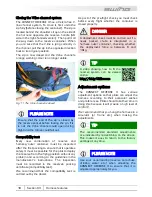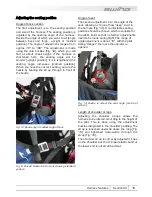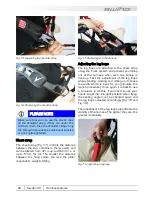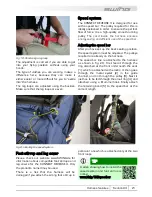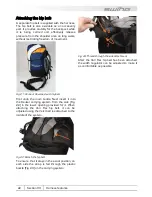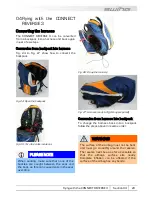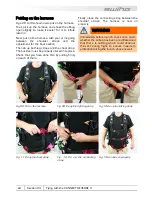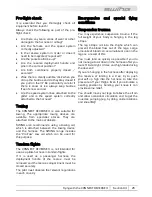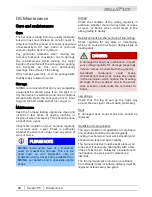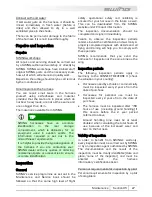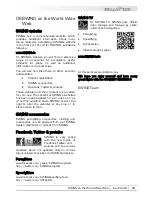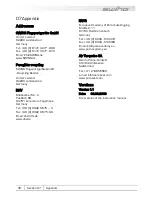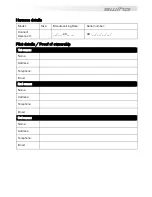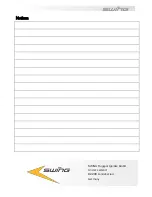
Harness features
Section 03
19
Adjusting the seating position
Angle of back section
The first adjustment is to the seating position
and size of the harness. The seating position is
adjusted by the opening angle of the harness.
Decide the angle at which you want to sit (angle
between back and thigh - upright or inclined
position). The angle of adjustment ranges from
approx. 70° to 100°. The adjustment is made
using the side buckles (Fig. 12), which you will
find at about chest height. If the harness is
shortened here, the seating angle will be
smaller (upright position); if it is lengthened the
seating angle increases (inclined position).
When you have the correct setting, secure the
buckle by feeding the strap through in front of
the buckle.
Fig. 12: Buckle open
to adjust angle of back
Fig. 6: Buckle blocked with mark
showing standard
position
Angle of seat
The second adjustment is to the angle of the
seat, allowing a choice of how “deep” to sit in
the harness (Fig. 14).
A comfortable seating
position should be chosen which is suitable for
the pilot’s build, so that no further adjustments
need to be made during flight. The range of
angle adjustment is about 10°, with the pilot
sitting “deeper” the more the adjustor is
opened.
Fig. 14: Buckle to adjust the seat angle (centre of
picture)
Length of shoulder straps
Adjusting the shoulder straps allows the
harness to be altered according to the height of
the pilot. This is done using the adjustment
buckles integrated in the shoulder padding. The
strap is loosened upwards above the loop (Fig.
15) and tightened downwards through the
strap (Fig. 16).
The shoulder strap is correctly adjusted if it lies
on the shoulder but the crimped elastic band at
the lower end is not stretched taut.













